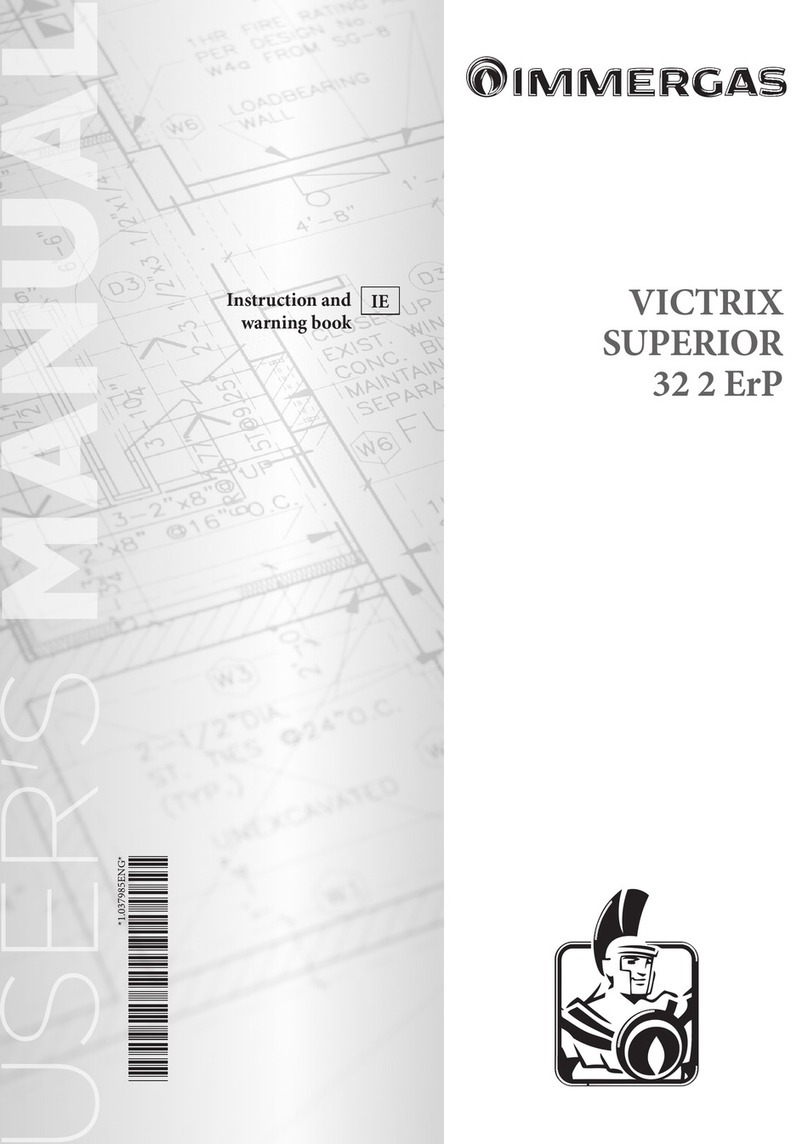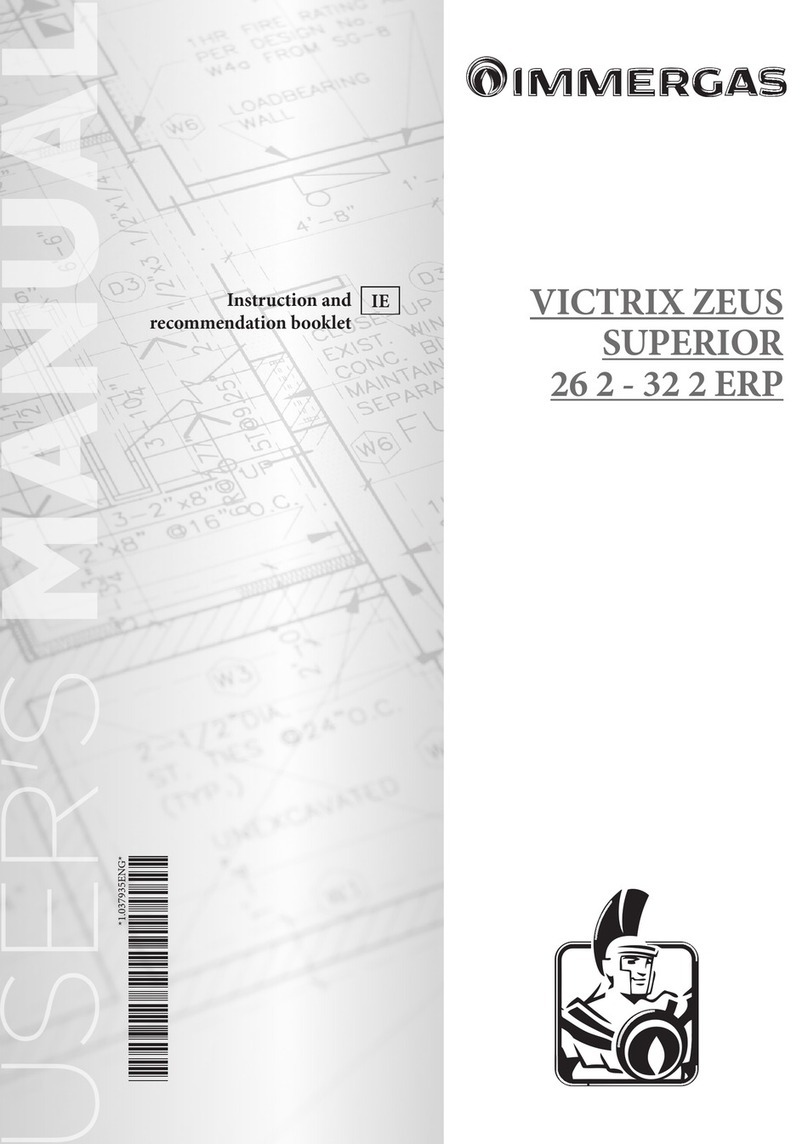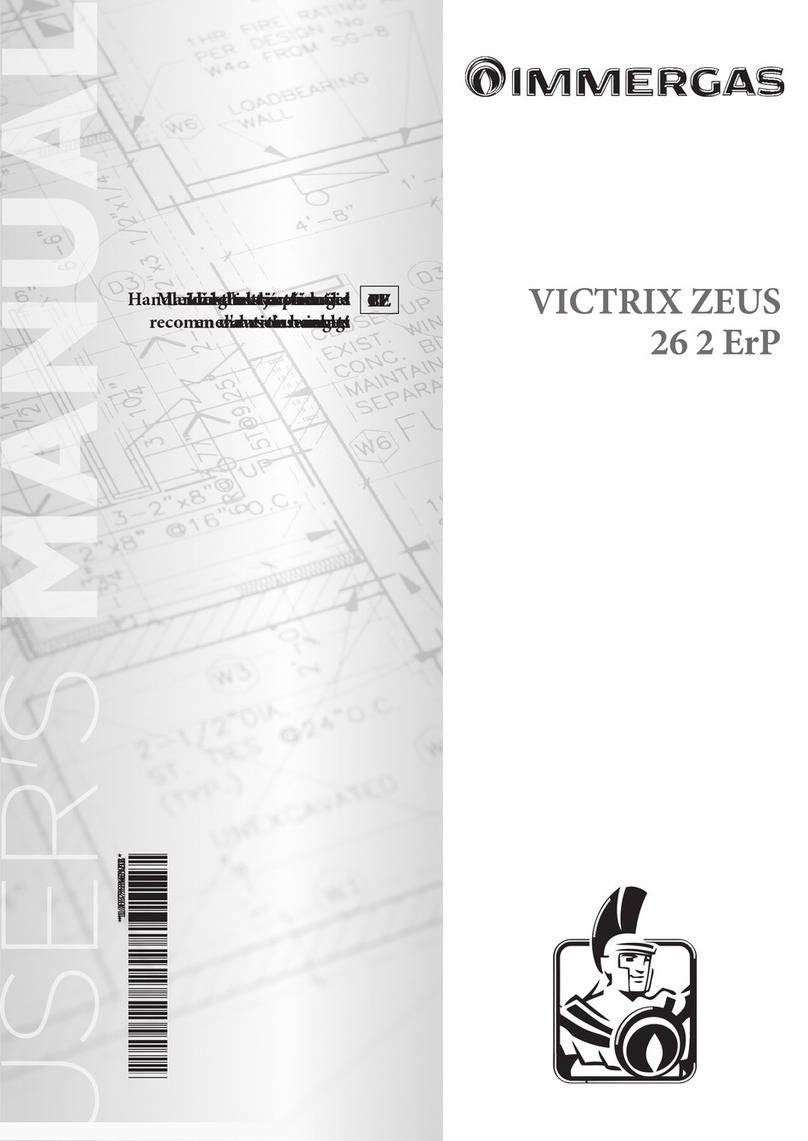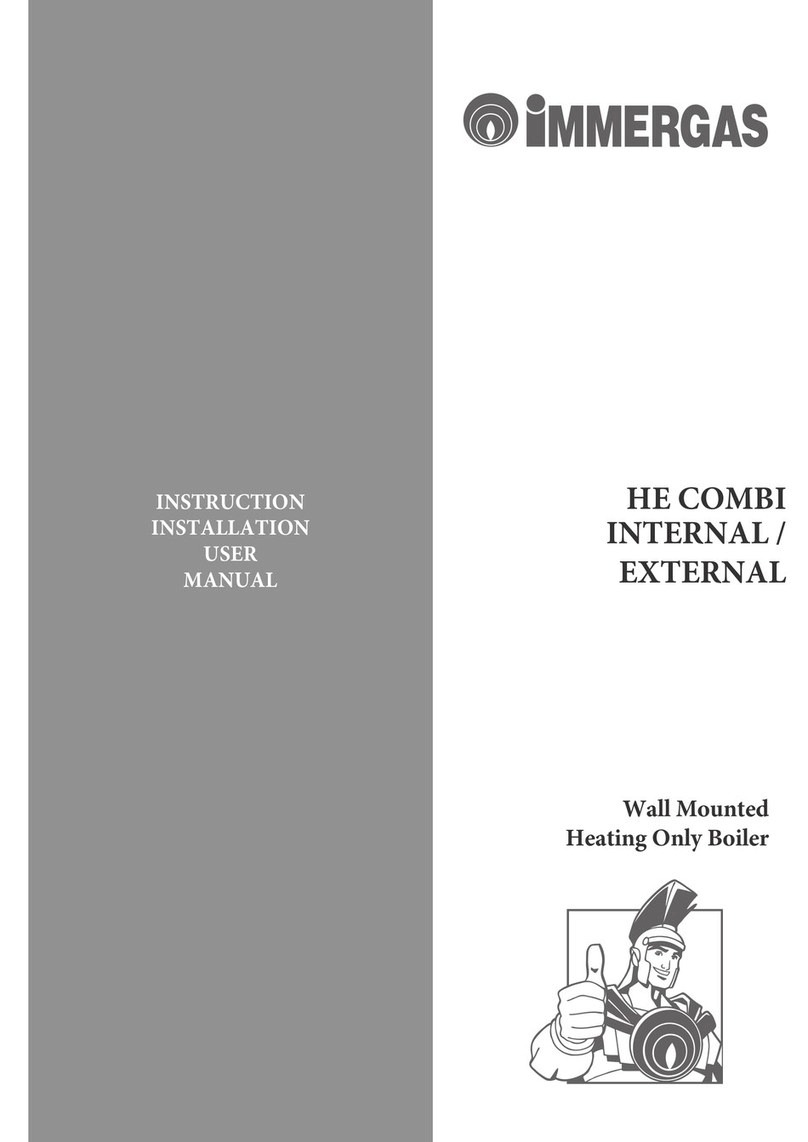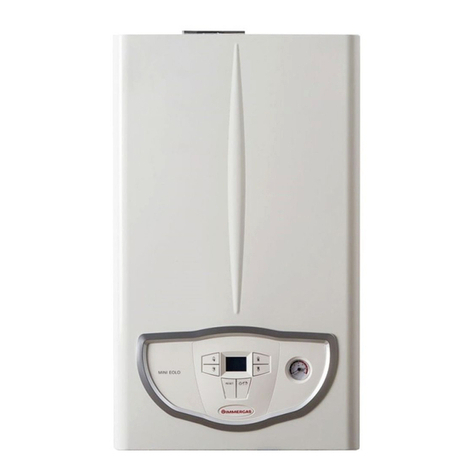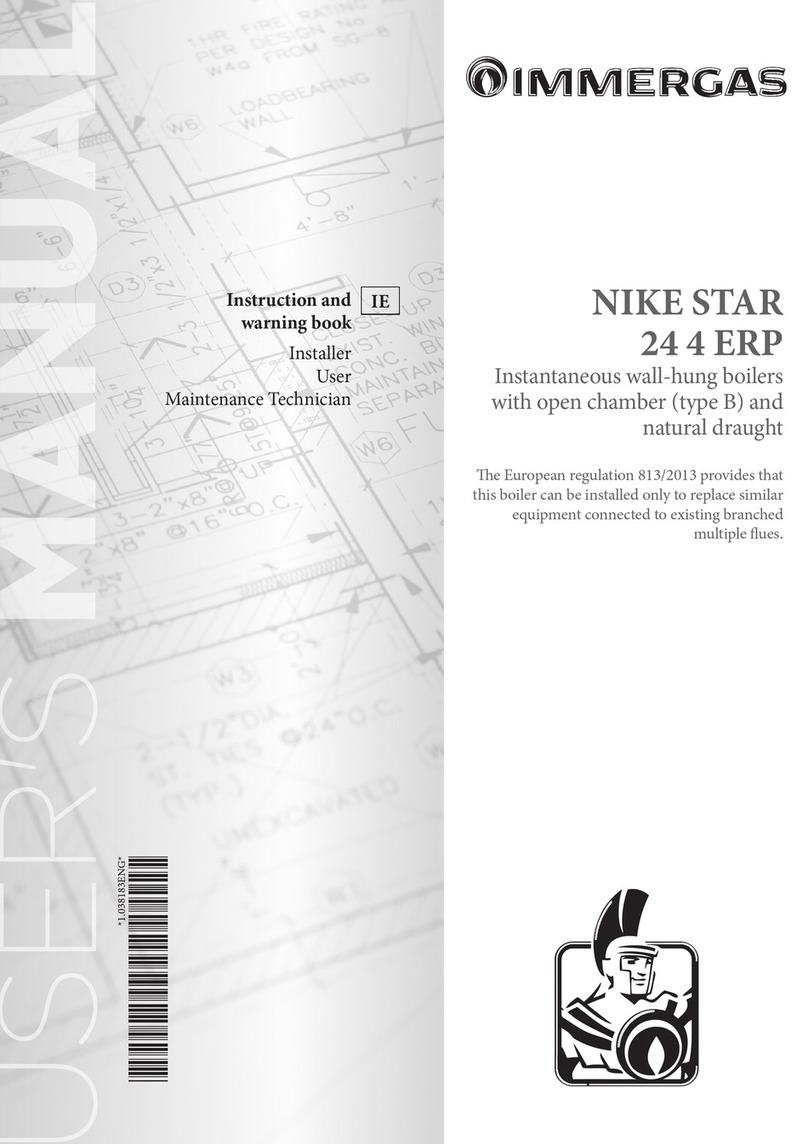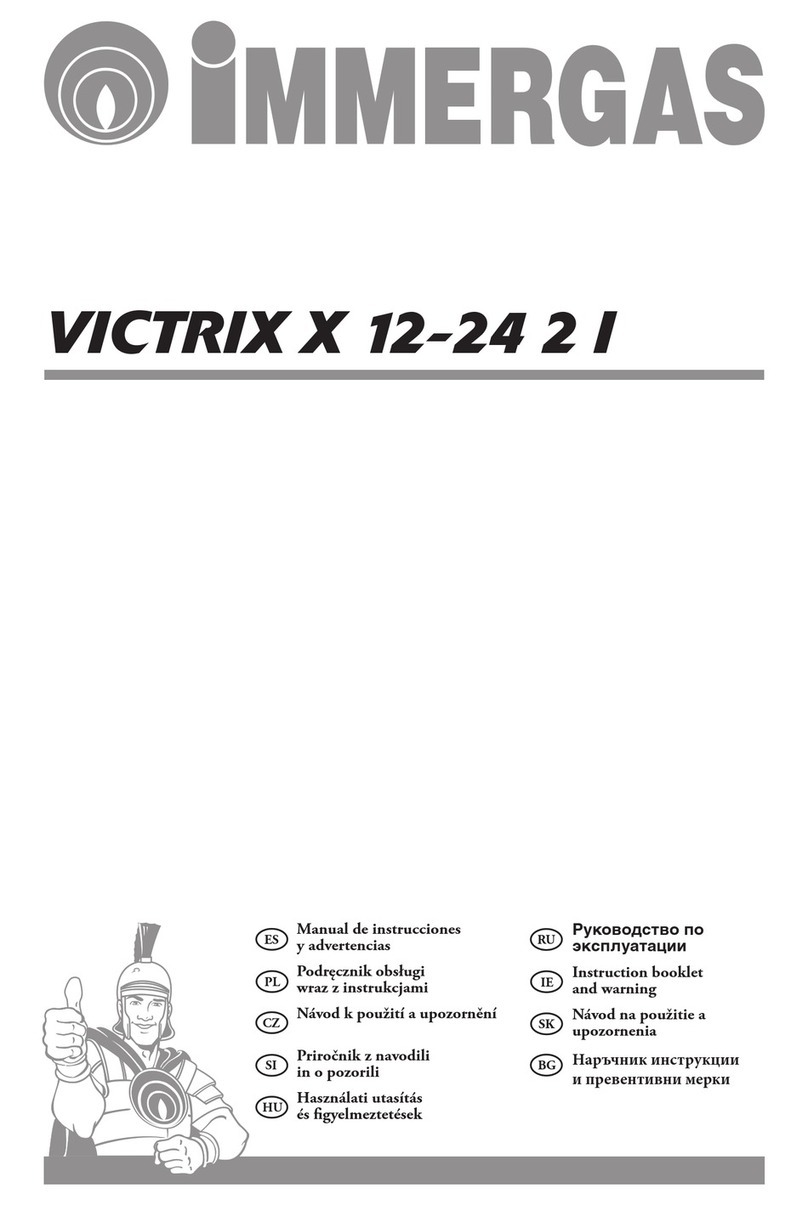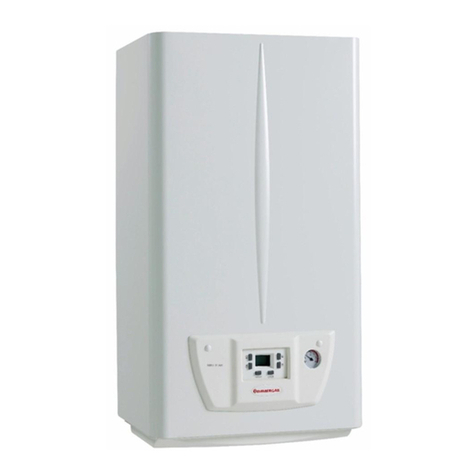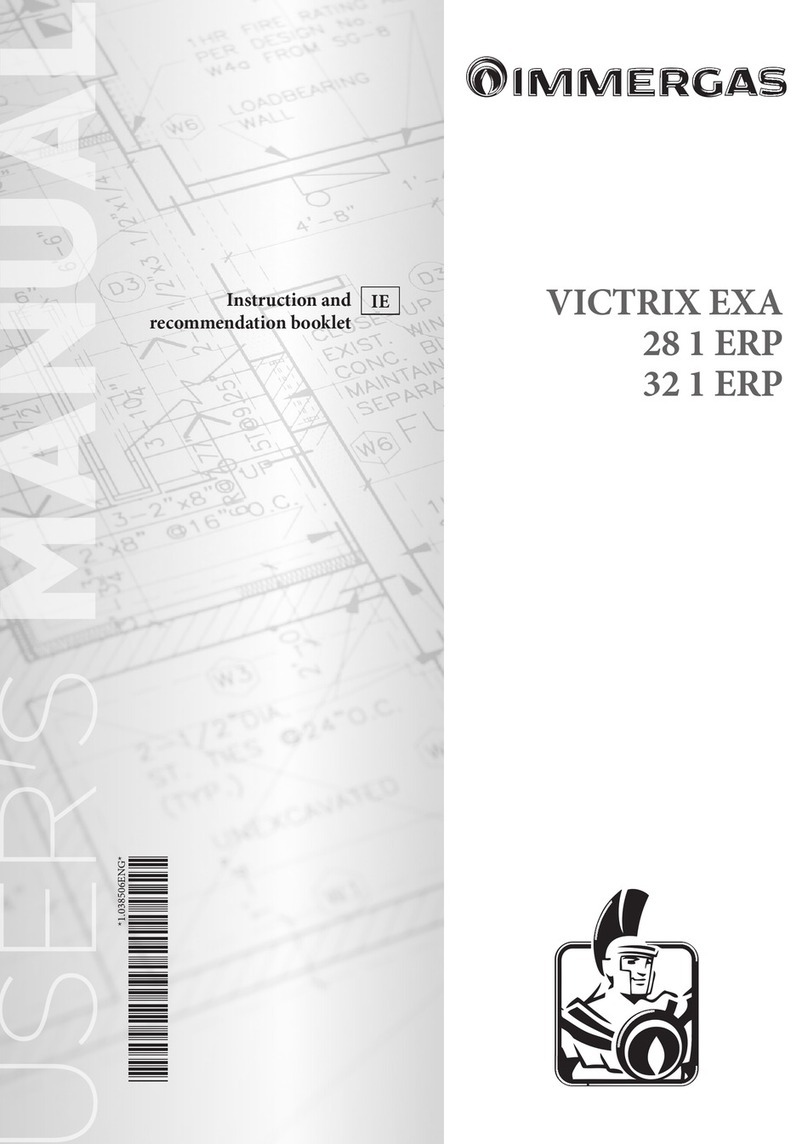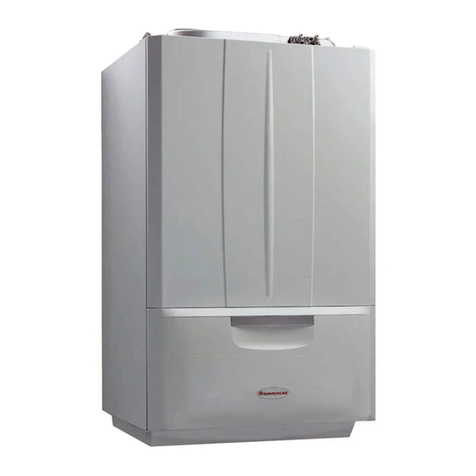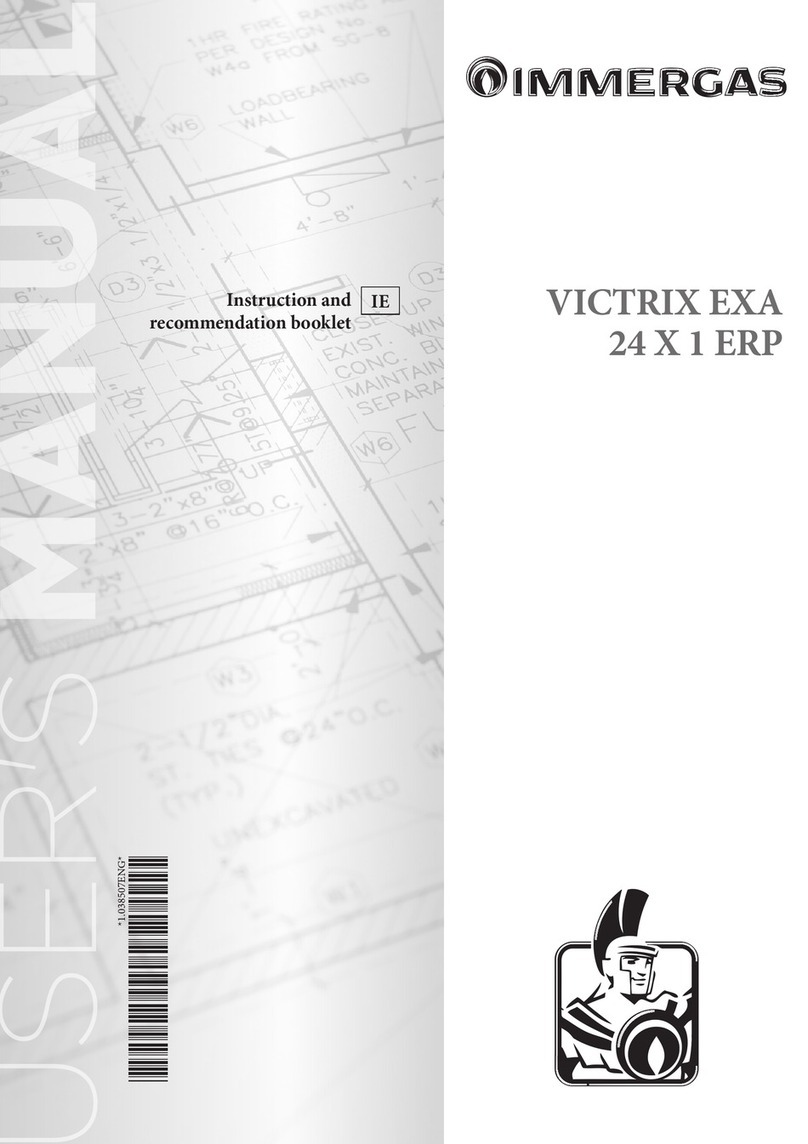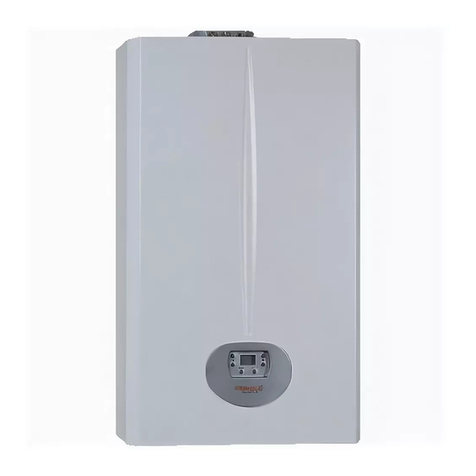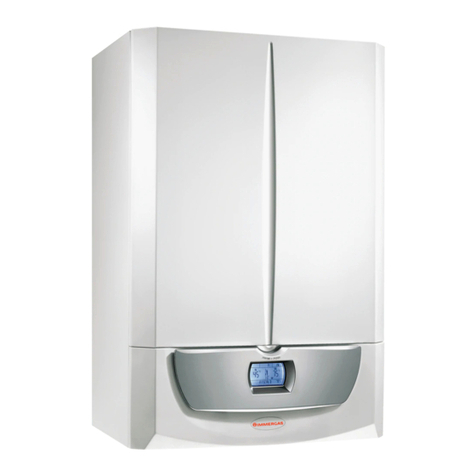
5
SI NO
1-1
INSTALLERUSER
MAINTENANCE TECHNICIAN
1BOILER
INSTALLATION
1.1 INSTALLATION
RECOMMENDATIONS.
The Victrix Superior 32 X 2 ErP boiler has
been designed for wall mounted installation
only, to heat and produce domestic hot water
for domestic use and similar purposes (when
the boiler is connected to an external storage
tank unit).
e place of installation of the appliance and
relative Immergas accessories must have suitable
features (technical and structural) such to allow
(always in safety, efficiency and comfortable
conditions):
- installation (according to the provisions of the
technical legislation and technical regulations);
- maintenance operations (including scheduled,
periodic, routine and special maintenance);
- removal (to outdoors in the place for loading
and transporting the appliances and compo-
nents) as well as their possible replacement
with equivalent appliances and/or components.
e wall surface must be smooth, without any
protrusions or recesses enabling access to the
rear part. ey are not designed to be installed
on plinths or oors (Fig. 1-1).
By varying the type of installation the
classication of the boiler also varies, precisely:
- B23 or B53 type of boiler if installed using the
relevant terminal for air intake directly from
the room in which the boiler has been installed.
- Type C boiler if installed using concentric
pipes or other types of pipes envisioned for
the sealed chamber boiler for intake of air and
expulsion of fumes.
N.B.: appliance classification is provided in
the images of the various installation solutions
shown on the following pages.
Only professionally enabled companies are
authorised to install Immergas gas appliances.
Installation must be carried out according to
regulation standards, current legislation and in
compliance with local technical regulations and
the required technical procedures.
Attention: the manufacturer declines all liability
for damages caused by boilers removed from
other systems or for any non-conformities of
such equipment.
Before installing the appliance, ensure that it is
delivered in perfect condition; if in doubt, contact
the supplier immediately. Packing materials
(staples, nails, plastic bags, polystyrene foam,
etc.) constitute a hazard and must be kept out of
the reach of children. If the appliance is installed
inside or between cabinets, ensure sufficient
space for normal servicing; it is therefore
recommended to leave at least 45 cm between the
upper part of the boiler and the ceiling and a gap
of 3 cm between the boiler casing and the vertical
sides of the cabinet. Leave adequate space under
the boiler for possible hydraulic connections.
Keep all flammable objects away from the
appliance (paper, rags, plastic, polystyrene, etc.).
Do not place household appliances underneath
the boiler as they could be damaged if the safety
valve intervenes with the blocked conveyor
system (remember that the safety valve must
always be conveyed away by a draining funnel), or
if there are leaks from the hydraulic connections;
on the contrary, the manufacturer cannot be
held responsible for any damage caused to the
household appliances.
It is also advisable, to not position furnishings,
furniture, etc., under the boiler for the above
mentioned reasons.
In the event of a malfunction, fault or incorrect
operation, turn the appliance o and contact
an authorised company (e.g. the Authorised
Technical Assistance centre, which has
specifically trained staff and original spare
parts). Do not attempt to modify or repair the
appliance alone.
Failure to comply with the above implies personal
responsibility and invalidates the warranty.
• Installation Standards:
- is boiler can be installed outdoors in a
partially protected area. A partially protected
area is one in which the appliance is not
exposed to the direct action of the weather
(rain, snow, hail, etc...).
is type of installation is only possible when
permitted by the laws in force in the appliance’s
country of destination.
- Installation of gas appliances, ue exhaust
pipes and combustion air intake pipes is
forbidden in places with a re risk (for ex-
ample: garages, closed parking stalls), and
in potentially dangerous places.
- Installation is prohibited on the vertical
projection of the cooking surface.
- Installation is forbidden in places/rooms that
constitute public areas of apartment build-
ings, internal stairways or other escape routes
(e.g. oor landings, entrance halls, etc.).
- Installation is also forbidden in places/rooms
that constitute public areas of apartment
buildings such as cellars, entrance halls, at-
tics, los, etc., unless otherwise provided for
by local regulations in force.
- Installation in places with a fire risk is
prohibited (for example: garages, box), gas
appliances and relative ue ducts, ue exhaust
pipes and combustion air intake pipes.
- Installation is prohibited on the vertical
projection of the cooking surface.
- Installation is also prohibited in places/
environments that constitute common parts
of oce condominiums such as stairs, cellars,
entrance halls, attics, los, escape routes,
etc. if they are not located inside technical
compartments under the responsibility of
each individual building and only accessible
to the user (for the features of the technical
compartments, see the current technical
regulations).
Important: wall mounting of the boiler must
guarantee stable and ecient support for the
generator.
e plugs (standard supply) are to be used only in
conjunction with the mounting brackets or xing
template to x the appliance to the wall; they only
ensure adequate support if inserted correctly
(according to technical standards) in walls made
of solid or semi-hollow brick or block. In the
case of walls made from hollow brick or block,
partitions with limited static properties, or in any
case walls other than those indicated, a static test
must be carried out to ensure adequate support.
YES NO
N.B.: the hex head screws supplied in the blister
pack are to be used exclusively to x the relative
mounting bracket to the wall.
ese boilers are used to heat water to below
boiling temperature in atmospheric pressure.
ey must be connected to a central heating
system and hot water circuit suited to their
performance and capacity.
